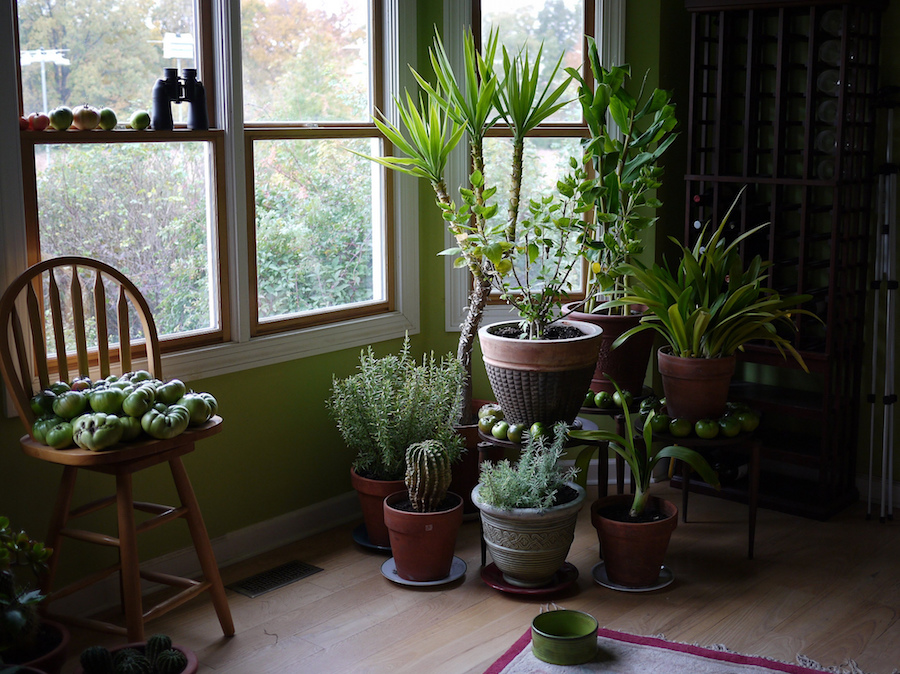7 indoor plants to boost your environment
As research suggests plants can bolster workplace wellbeing in more ways than one, here are some low-maintenance options to consider.
It’s time to clear out the office clutter and bring some zing to your workspace – and a new plant could be just the ticket to add some colour and freshness, and boost your productivity in the process.
Joint studies by Dutch and British universities, carried out on working environments in London and Holland, suggest plants can increase productivity by as much as 15%, as well as improving employees’ sense of wellbeing in the workplace by up to 40%.
So, what can you grow in the office and how will it thrive? Interior plant welfare expert Kenneth Freeman, of interior plants specialist Ambius, suggests the following seven options…
1. Devil’s Ivy

Devil’s ivy
Devil’s Ivy (Epipremnum aureum, a type of evergreen vine, can grow beyond 30ft in the wild, but indoors it rarely exceeds 8ft. The leaves are large and sometimes heart-shaped and come in a wide variety of light and dark shades.
This species adapts well to a variety of office conditions, from low light levels to brighter ones, but is ideally placed near a window but out of direct sunlight.
Water when the surface has dried out, allowing excess moisture to drain through. These plants don’t like soggy bottoms. Their heart-shaped white-splotched leaves make a lovely addition to a desk, shelf or table. Larger specimens, trained around a pole or cane, look great in big pots on the floor.
2. Peace lily (Spathiphyllum)
Peace lilies have very wide, broad, deep green leaves and grow beautiful white flowers that have given them their common name. They are popular because they don’t need a lot of light and are forgiving of occasional over-watering, too.
Peace lilies are also known for cleaning the air, helping to remove toxins and creating a healthier work environment. They’re also tolerant of low light and are vigorous growers. These plants work well for focal interest and screening.
Plants which don’t flower need to be put in brighter light – but out of direct sunlight, which can scorch the leaves. Brown leaf tips can be caused by overwatering. Water thoroughly, but don’t let the soil get soggy.
3. Dracaena
These tough plants make a great choice for eliminating pollutants. Easy to care for, they can also provide a focal point or be used as a screening plant.
Dracaena cincta (sometimes called Dracaena marginata), can survive in drought-like conditions and have a relentless root system which makes them tough to wilt – perfect for a neglected desk plant.
Not only are they sturdy, but their thin, often colourful leaves look attractive on desks. For darker areas, or where a statement is needed, Dracaena ‘Janet Craig’, with its bold, green foliage, is tough and forgiving.
4. Aglaonema

Aglaomena
Sometimes just called ‘aglos’ or Chinese evergreen, aglaonema are popular because of the colour their leaves can attain. They have short stems bearing long-stalked, often attractively variegated leaves. While many are deep green, they can also have traces of silver or red. They symbolise long life to the Chinese.
They need temperatures of 16-26C and can tolerate low light conditions. The darker the leaves, the less light is needed. Keep the soil moist at all times but you’ll need to water less in the winter. Repot them every two or three years, but they like to be pot-bound so don’t worry if the roots start showing through the bottom of the pot.
5. Ficus benjamina

Weeping Fig
Commonly known as the ‘weeping fig’, this is a versatile plant that looks attractive as a standalone specimen or as part of a mixed display. They grow wild in the tropical forests of India, south-east Asia and northern Australia.
Indoors, keep the area humid, regularly misting the plant or setting it on a pebble tray filled with water. However, weeping figs don’t like wet roots, so only water them if the top of the soil is dry. Cold draughts from windows or doors will harm them, so place them in a draught-free spot.
6. Zamioculcas zamiifolia

Zamioculcas
Commonly abbreviated to the ZZ plant, the fat stalks and bulging roots of these low-maintenance plants store a huge amount of water, meaning you don’t have to search around the office for a watering can every day.
A favourite for people who are prone to killing their plants, they can also tolerate prolonged periods of low light and are ideal desk plants in our dark winters. They need little fertiliser, don’t require much water, and can handle neglect.
7. Philodendron

Philodendron
Philodendrons have been a mainstay as indoor plants since their discovery in the late-1800s in South America. The Imperial Green is a hybrid, with large, lush, deep-green leaves with a glossy coating, and can maintain this sleek appearance in the shade.
Preferring a low humidity and temperatures of around 18-20C, they are ideal for offices as they can be used as part of a large display in a corner, either with other philodendrons or different plants, giving your office a lush, tropical feel.
The Press Association
Latest posts by The Press Association (see all)
- 5 surprising things you can clean in the washing machine - January 9, 2025
- Prince William posted a heartfelt birthday message to ‘most incredible wife and mother’ - January 9, 2025
- Birthday wishes for Catherine from royal family as the Princess of Wales turns 43 - January 9, 2025
- Maple Cinnamon Granola - January 8, 2025
- 8 things your feet can tell you about your health - January 8, 2025





















